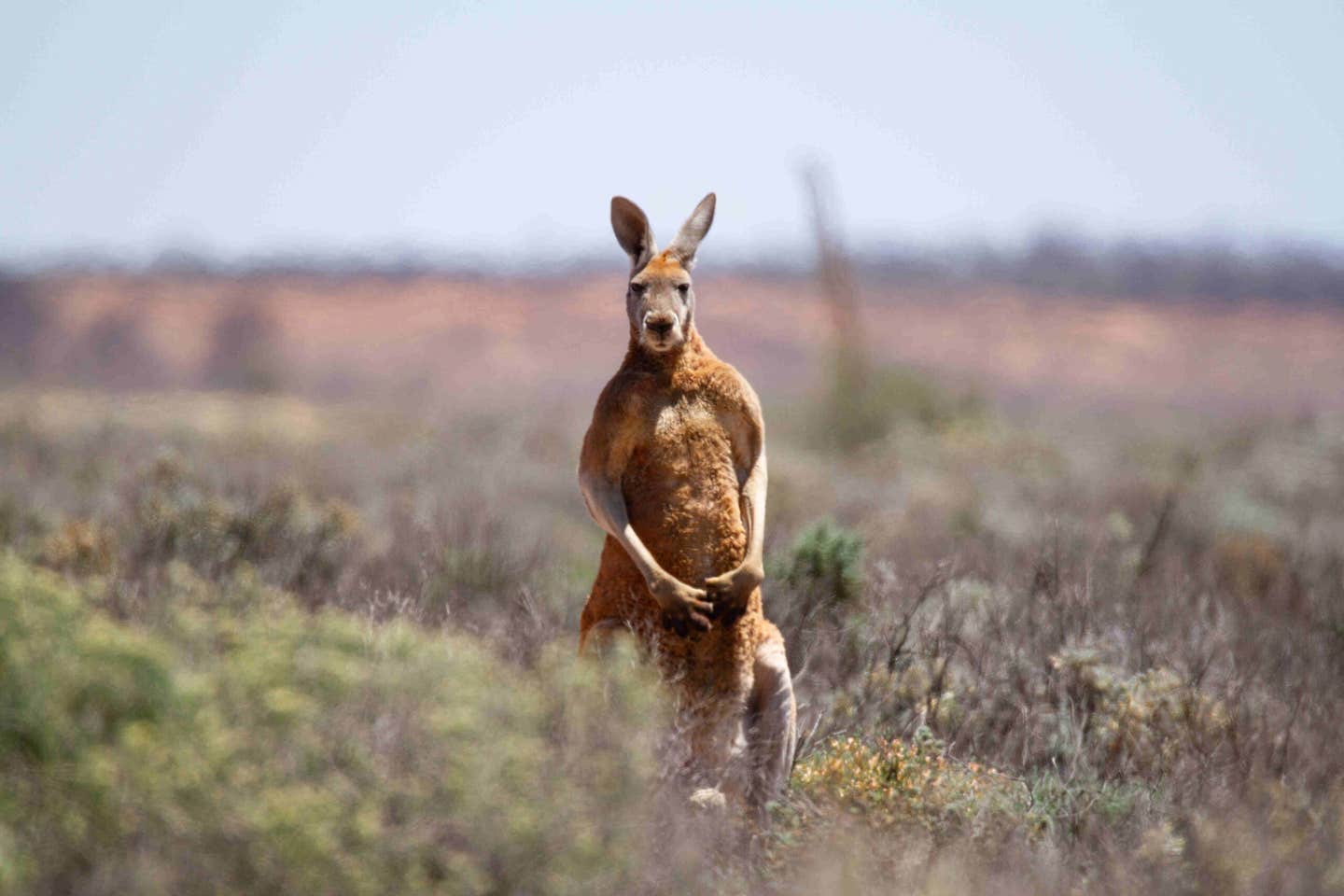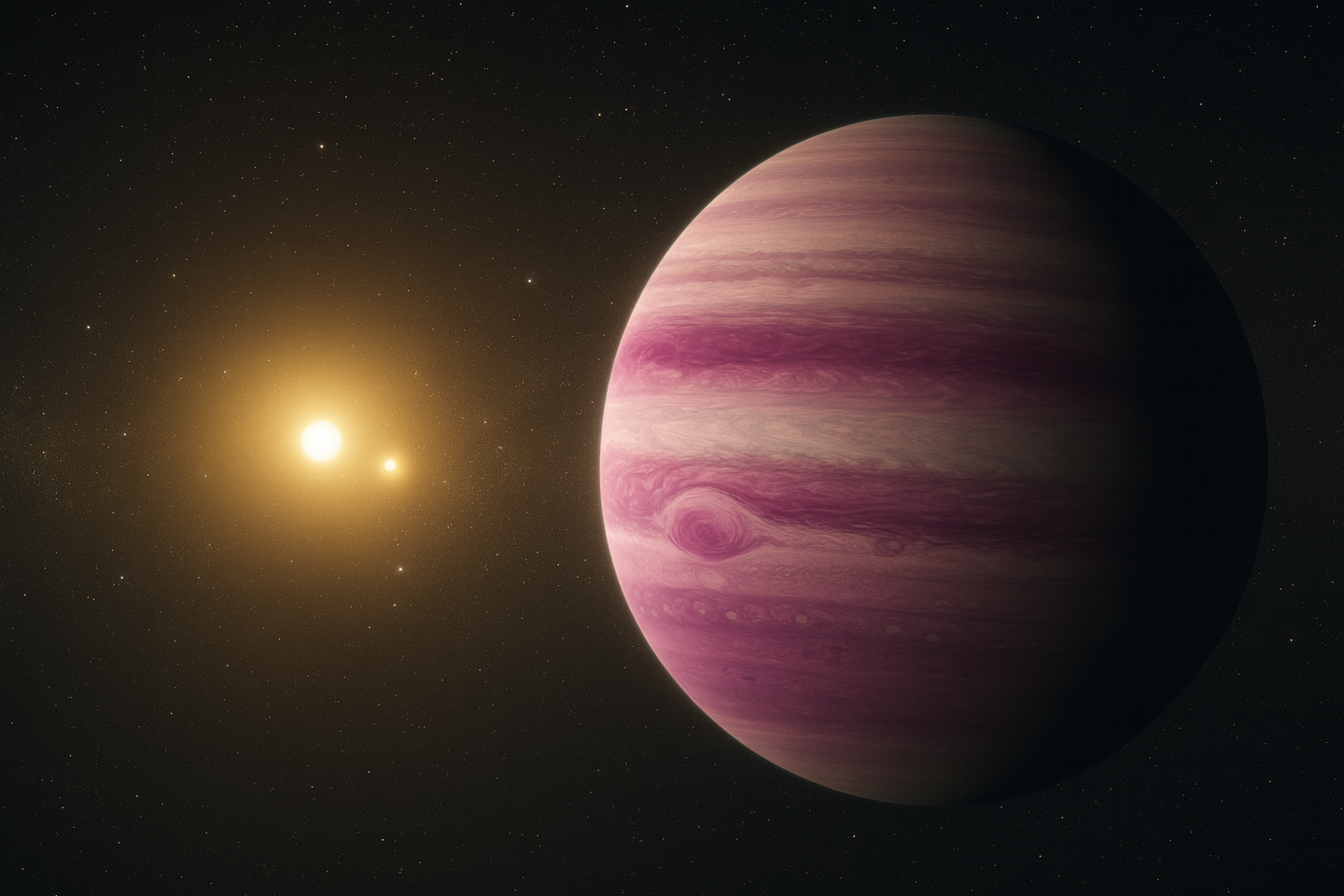Scientists solve the mystery of what killed off prehistoric kangaroos
Using advanced dental microwear texture analysis, scientists revealed that many extinct kangaroo species were far more adaptable in their diets than previously thought.

Advanced dental analysis of prehistoric kangaroo fossils reveals dietary flexibility, challenging climate-based extinction theories and pointing to human impact. (CREDIT: CC BY-SA 4.0)
Australia's Pleistocene epoch, spanning from 2.6 million to 12,000 years ago, was a period marked by dramatic ecological shifts. Among the many challenges faced by its inhabitants, dietary adaptability emerged as a key factor for survival.
Recent research, centered on the renowned Victoria Fossil Cave at the Naracoorte Caves World Heritage Area, sheds light on the dietary habits of prehistoric kangaroos and challenges long-standing assumptions about their extinction.
Using advanced dental microwear texture analysis (DMTA), scientists have revealed that many extinct kangaroo species were far more adaptable in their diets than previously thought. This finding, published in the journal, Science, rewrites the narrative of their disappearance, positioning human activity rather than climate change as the likely culprit.
DMTA examines microscopic wear patterns on tooth enamel, which reflect the physical properties of consumed food. By analyzing over 2,650 scans from 937 kangaroo specimens, researchers uncovered the diets of 12 extinct species and compared them with 17 modern kangaroo species. The results overturned the idea that specialized diets led to the extinction of certain kangaroos.
Lead researcher Dr. Sam Arman of Flinders University and the Museum and Art Gallery of the Northern Territory highlighted the significance of these findings. “Most prehistoric kangaroos at Naracoorte had broad diets. This dietary flexibility likely played a key role in their resilience during past changes in climate,” Arman explained.
The study found that most species were mixed feeders, consuming both grasses and shrubs, rather than being strict grazers or browsers.
The ability to consume a variety of foods indicates that prehistoric kangaroos were highly adaptable. For instance, the extinct macropodine Protemnodon mamkurra, initially thought to be a browser or grazer, exhibited wear patterns indicative of a more generalized diet.
Similarly, sthenurines, known as short-faced kangaroos, displayed dietary habits ranging from mixed feeding to obligate browsing. These findings highlight niche partitioning among species, reducing competition and promoting coexistence.
Short-faced kangaroos had unique anatomical features that led to assumptions of dietary rigidity. However, DMTA demonstrated that even these species exhibited varied diets. This flexibility suggests they were not as vulnerable to climate-driven vegetation changes as previously believed.
“The distinctive short-faced kangaroo anatomy led to a widespread view that sthenurines were unable to adapt their diets when climate change altered vegetation patterns, leading to their extinction,” said co-author Professor Gavin Prideaux. “Our findings show that dietary specialization is unlikely to explain their disappearance.”
Related Stories
Instead, the extinction of these kangaroos aligns with the arrival of humans on the Australian continent between 65,000 and 40,000 years ago. During this period, 90% of Australia’s large species, including at least 27 kangaroo species, vanished. Human predation and habitat alteration likely played a pivotal role.
The Naracoorte Caves provided an ideal setting for this research. Fossil deposits from the Main Fossil Chamber span at least one glacial-interglacial cycle, capturing a snapshot of kangaroo diets across varied climatic conditions. This dataset revealed that dietary flexibility was a shared trait among many species, enabling them to persist through environmental fluctuations.
The dietary adaptability of prehistoric kangaroos offers insights into their ecological roles. According to Dr. Arman, having the “hardware” to consume tougher resources provided a survival advantage during lean periods. “An analogy might be my 4x4. Most of the time, I don’t need to engage four-wheel drive, but this capability becomes crucial when I do need it,” he noted.
The findings also reveal disparities between microwear signatures and morphology-based dietary inferences. Historically, researchers inferred kangaroo diets based on their craniodental structure, assuming sthenurines were built for processing tough vegetation and macropodines for eating grass. This study challenges these assumptions, revealing that morphology alone does not fully explain dietary behavior.
This research underscores the need to evaluate the diets of other large Pleistocene mammals to understand the factors influencing their extinction. Similar disparities between diet and morphology have been observed in other species, such as hominins and ruminants, suggesting broader implications for studying extinct fauna.
While dietary habits are critical to understanding extinction, they are only one piece of the puzzle. Intrinsic traits like body size, geographic range, and locomotion likely interacted with external pressures such as human hunting and habitat change.
“By shedding light on the ecological roles of Australia’s marsupial megafauna, we will develop a better understanding of how its modern ecosystems evolved,” Prideaux explained. “This might help contextualize why Australia has been so vulnerable to introduced large mammals, such as pigs, camels, deer, and horses.”
The study’s findings also challenge previous theories that large kangaroos were dietary specialists vulnerable to climatic shifts. Evidence suggests that vegetation changes in southeastern Australia were a consequence, not a cause, of large herbivore extinctions.
Prehistoric kangaroos' survival strategies included adapting their diets to available resources. The three extinct species exhibiting any degree of specialization, including Prot. mamkurra as a grazer and Si. maddocki as a browser, represent exceptions rather than the rule.
Their extinction cannot be attributed to a singular dietary limitation. Instead, the broad diets of most species indicate resilience to environmental changes, refuting climate change as the primary driver of their demise.
Understanding the factors that contributed to the extinction of prehistoric kangaroos has implications for modern conservation efforts. The study emphasizes the importance of considering dietary adaptability when assessing species’ resilience to environmental changes.
“This research represents an important step in understanding the ecology of Australian megafaunal species,” said Grant Gully, a curator and co-author of the study. The team hopes to extend their analysis to other fossil sites, particularly those from the critical period 60,000 to 40,000 years ago.
The collaboration between Flinders University and the Museum and Art Gallery of the Northern Territory highlights the importance of integrating innovative techniques with traditional palaeontological methods. By analyzing extensive datasets, researchers can uncover nuanced ecological insights that inform both historical and contemporary biodiversity challenges.
This study also underscores the interconnectedness of past and present ecosystems. By understanding how prehistoric species adapted to environmental changes, scientists can better predict the impacts of future challenges, such as climate change and human activity, on modern fauna.
Ultimately, the resilience of prehistoric kangaroos offers a valuable lesson in the importance of adaptability. As researchers continue to explore Australia’s rich fossil record, they hope to uncover more secrets about the factors that shaped its unique ecosystems and the species that once thrived within them.
Note: Materials provided above by The Brighter Side of News. Content may be edited for style and length.
Like these kind of feel good stories? Get The Brighter Side of News' newsletter.



